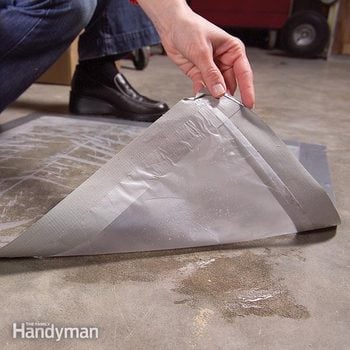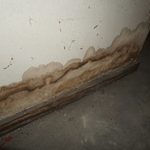Damp Basement: Finding Leaks and Water Sources
Updated: Feb. 10, 2023Musty odors indicate a moisture problem

Diagnosing the problem
Moisture from the damp ground outside is probably coming through your concrete floor and walls. First look for visible signs of moisture, like damp concrete along the walls and white lines of a powdery substance on the walls themselves. The powdery material is called efflorescence, which is finely crystallized minerals that are deposited as water dries out. If you don’t spot these signs of incoming water, duct-tape a 2-ft. square of plastic (a plastic garbage bag will work) to the floor near an outer wall and another to the lower half of the exterior wall. Wait 24 hours, then remove them (Photos 1 and 2). If the concrete under them looks dark and damp or you find moisture on the underside of the plastic, moisture is coming through the concrete.
You should be able to control the basement’s dampness and odors by running a dehumidifier. The musty smell is caused by fungal growth, so you may have to scrub the walls, replace damp boxes, and wash or throw out musty-smelling items. Store items on blocks or storage racks to keep them off the floor.
Unfortunately, there are no easy fixes to stop the moisture itself. Older basements were not damp-proofed on the exterior as they are now. And applying a dampproofing sealer to the walls and floors on the inside may work for a while but isn’t a long-term solution.
However, sometimes small changes outside can have a surprisingly large effect inside. The key is to channel rainwater and other moisture sources away from the foundation. Make sure your gutters aren’t clogged, your downspouts dump water at least 6 ft. away from the house and the ground slopes away from the house.
Required Tools for this Project
Have the necessary tools for this DIY project lined up before you start—you’ll save time and frustration.
- Utility knife
Required Materials for this Project
Avoid last-minute shopping trips by having all your materials ready ahead of time. Here’s a list.
- Duct tape
- Plastic tarp or garbage bag





